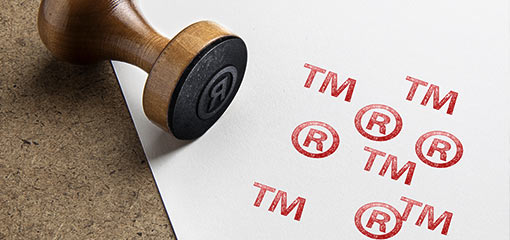This article is written by Vaidya Minal who is pursuing a Certificate Course in Intellectual Property Law and Prosecution from LawSikho.
Table of Contents
Introduction
Humans are distinct creatures who are in constant race to evolve and develop. Evolving as an individual, as a group, as a society and as a culture. The need to grow, customise humans, and to improve as a generation, has developed the race from the stone age to the age of 21st-century advancement. This changing pattern of lifestyles however sometimes reached to peak when nothing is static. The enterprising nature needs to be stable to achieve a common purpose of betterment in every aspect for the nation and its citizens. However, in the race of earning income, making profits, the mindset of the commerce and industry for few decades is believing in the transformation process. This mind-set has led to the consumers to constantly change.
Change in the form of products packaging, quality, quantity, and pricing. It is said that this world is of marketing, branding advertising and packaging. Hence, Trademark, of all sorts are important to attract consumers. The wordmark, sign mark, tagline, a slogan, which constitutes the Trademark, has taken many forms and facets. So today I take the opportunity to explain about the introduction of Trademark as a concept, its importance in the commerce and industry, its impact on consumer behaviour, the concept of well-known marks and their domination and also the ever-changing landscape in consumer choices and the term ‘ FLUID TRADEMARK ‘
History of Trademark and Trademark Laws
Intellectual property of whatever type is intangible incorporate property. In each case it consists of a bundle of rights in relation to certain material object created by the owner.
In the case of a trademark, there are two types of rights; one conferred by registration under the Trademarks Act, 1999 and the other acquired in relation to a trade mark, trade name or get up by actual use in relation to some product or service. The rights conferred by registration are confined to the use of the mark in relation to the actual goods or services for which it is registered.
In the case of unregistered mark, get up and other badges of goodwill of business the protection is given to the goodwill of the business in relation to which such trademark is used.
Almost all nations have their respective IPR laws in place and they are quite similar as the IP is an International character. In India, The Trademark Act 1999 was pass in the year 1999. The Act consists of 13 chapters, forming 159 Sections and Schedule.
According to section 2(zb), a trademark means a mark capable of being represented graphically and which is capable of distinguishing the goods or services of one person from those of others and may include shape of goods, their packaging and combination of colours: and sub section (zb) (i) (ii).
It is in this context that “Fluid Trademarks” have come into existence as a dynamic marketing tool and are becoming an increasingly popular mode of branding where brand owners adopt novel ways to grab the attention of their consumers by way of a brand renovation to retain consumer engagement, without changing the source identification.
Fluid trademarks are marks that are based on an original popular and well-known trademark, but which have been intentionally change to appear as a number of variants while retaining some basic and important elements and features of the original mark.
We often encounter many popular traditional trademarks/brands in different variations. These are the new age trademarks as they are attractive. Which are created more likely to attract the public’s attention in the commercial space in this internet driven world. These marks prove to be a big hit for the brand owners to connect with people with the changing trends in the market and by customizing the traditional marks as per the current occasion, festival, season, weather, etc. to leave a more personal impact on the consumer.
Fluid marks can take several forms, including logos, graphic symbols, verbal elements, or a combination thereof (i.e., any type of identifier that qualifies as a trademark).
Trend Setters are behind the Trademark brand makers
- Fluid marks are more eye catching than a mark that stays static.
- To maintain interest in the brand and to Capture consumer attention – particularly online.
- Strengthen brand awareness by interacting with consumers.
- In case the trademark owner has not applied for trademark protection for its variants, he cannot initiate a procedure when a third party uses one or more signs that correspond to these variants. The protection only extends to his registered underlying mark.
The trademarks perform as a source identifier by extensive usage. However, in the rapidly changing world, brand owners adopt every possible approach to keep up with the competition and grab the consumer’s attention. The fluid trademarks though help to popularize the mark by adopting a new and trending approach, it should be used wisely in the Indian market given that the concept of fluid trademarks is yet to be tested in the Indian Courts and can be safeguarded only through common law protection and by placing reliance on the originally registered mark. If used judiciously, the owners can make most out of the same for their brands.
Registration of fluid trademark
If we consider an example of doodle of Google as a fluid trademark, it is meant for temporary period of time, and hence the need of protecting it also is of temporary in nature.
The giants like Google, PepsiCo, MNC, whose Marks are mostly well known, according to my little understanding, should not be worried about getting it infringed. They are the giants and for giants even law can be twisted and bended at times. They are that niche class of royals that their trade secrets are often unheard by layman.
As per the nation of origin of the creator of the mark, the trademark registration process is codified in the IP laws.
In India, as per section, Chapter 3, section 18 to 26, the registration process is completely enumerated. And the registration is online and physical filing is allowed. Please kindly visit the government’s website ipindiaonline.gov.in for better and complete understanding of the process. And it is advisable to hire a trademark registration expert, an advocate for international registration and trademark attorney. To ensure that the proposed business entity is not misguided.
The legislation towards the protection of fluid trademarks from getting infringed is yet to be codified as this is a novel concept and it is a brainchild of creative artist. It can be said that the presence, awareness or spread of a fluid trademark is more in digital platforms than in reality.
There are few materials available on this concept. Since the changing nature of fluid Trademark is difficult to protect the focus should be on the core trademark on which the fluid variants are based. So that if that core Trademark is granted protection the fluid Mark’s related to that main trademark will be easily identified and protected.
Widely-Known Examples of Fluid Trademarks
Fluid marks have been on the internet, for quite some time now. The most notable example of a successful fluid trademark is Google’s Doodles.
Similarly, on India’s 74th Independence Day, the Google mark showcased cultural elements of India infused into the underlying Google mark (as shown below).
Protection of Fluid Marks
Well-known trademarks need to adopt a well thought out strategy while adapting fluid trademarks. They need to consider whether they want to register a fluid mark and how they want to monitor and enforce their fluid marks. For capturing the essence of a fluid mark for a trademark application, the applicant will have to describe each of the different variations of the mark. In the United States, the Trademark Manual of Examining Procedure lays down, “The modified mark must contain what is the essence of the original mark, and the new form must create the impression of being essentially the same mark. The law regarding this is quite new and there is further scope for its evolution also.
Conclusion
In the advent of technology and innovations, the branding, rebranding, and surviving in the competitive market has become quite challenging. This challenge may be artificial in nature in the era of digitization, Artificial Intelligence, and dominating factors of Information technology. Our minds are impacting by technological forces and hence our buying has changed greatly. The literate, elite, ultra-modern, ultra-reach society are using foreign brands.
The semi-urban population and the middle class still try to save on and many a time, might be going for less expensive, less luxurious brands and the other strata of our society, which is quite large in population, might be going to shop for non branded goods and services. However, to maintain the monopoly in these varied and diverse, market and to retain the consumers, every company, is trying to create novel value additions along with the originality of their goods and services.
Goods and services are a sector which forms majority of our economy and hence keeping the goodwill in the, market has become very necessary. Brand equity creators are getting hired and in demand to evolve the product and services. The fluid trademark is also one of such creative and novel way to satisfy the consumers.
Students of Lawsikho courses regularly produce writing assignments and work on practical exercises as a part of their coursework and develop themselves in real-life practical skill.
LawSikho has created a telegram group for exchanging legal knowledge, referrals and various opportunities. You can click on this link and join:















